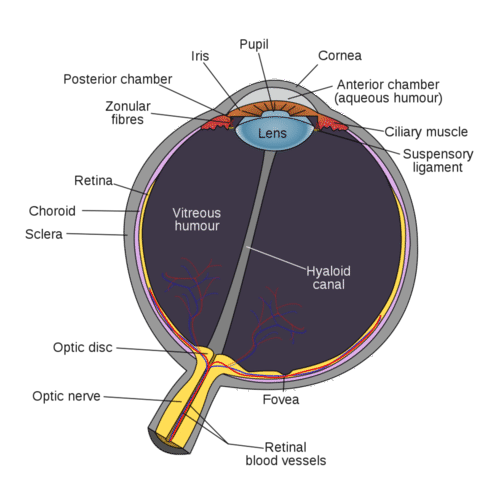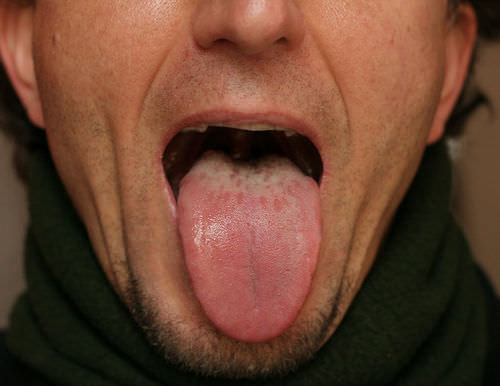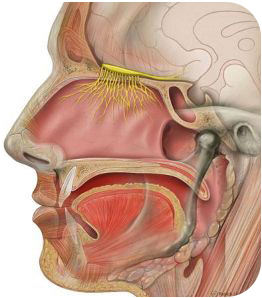13.8: Senses
- Page ID
- 13285
\( \newcommand{\vecs}[1]{\overset { \scriptstyle \rightharpoonup} {\mathbf{#1}} } \)
\( \newcommand{\vecd}[1]{\overset{-\!-\!\rightharpoonup}{\vphantom{a}\smash {#1}}} \)
\( \newcommand{\dsum}{\displaystyle\sum\limits} \)
\( \newcommand{\dint}{\displaystyle\int\limits} \)
\( \newcommand{\dlim}{\displaystyle\lim\limits} \)
\( \newcommand{\id}{\mathrm{id}}\) \( \newcommand{\Span}{\mathrm{span}}\)
( \newcommand{\kernel}{\mathrm{null}\,}\) \( \newcommand{\range}{\mathrm{range}\,}\)
\( \newcommand{\RealPart}{\mathrm{Re}}\) \( \newcommand{\ImaginaryPart}{\mathrm{Im}}\)
\( \newcommand{\Argument}{\mathrm{Arg}}\) \( \newcommand{\norm}[1]{\| #1 \|}\)
\( \newcommand{\inner}[2]{\langle #1, #2 \rangle}\)
\( \newcommand{\Span}{\mathrm{span}}\)
\( \newcommand{\id}{\mathrm{id}}\)
\( \newcommand{\Span}{\mathrm{span}}\)
\( \newcommand{\kernel}{\mathrm{null}\,}\)
\( \newcommand{\range}{\mathrm{range}\,}\)
\( \newcommand{\RealPart}{\mathrm{Re}}\)
\( \newcommand{\ImaginaryPart}{\mathrm{Im}}\)
\( \newcommand{\Argument}{\mathrm{Arg}}\)
\( \newcommand{\norm}[1]{\| #1 \|}\)
\( \newcommand{\inner}[2]{\langle #1, #2 \rangle}\)
\( \newcommand{\Span}{\mathrm{span}}\) \( \newcommand{\AA}{\unicode[.8,0]{x212B}}\)
\( \newcommand{\vectorA}[1]{\vec{#1}} % arrow\)
\( \newcommand{\vectorAt}[1]{\vec{\text{#1}}} % arrow\)
\( \newcommand{\vectorB}[1]{\overset { \scriptstyle \rightharpoonup} {\mathbf{#1}} } \)
\( \newcommand{\vectorC}[1]{\textbf{#1}} \)
\( \newcommand{\vectorD}[1]{\overrightarrow{#1}} \)
\( \newcommand{\vectorDt}[1]{\overrightarrow{\text{#1}}} \)
\( \newcommand{\vectE}[1]{\overset{-\!-\!\rightharpoonup}{\vphantom{a}\smash{\mathbf {#1}}}} \)
\( \newcommand{\vecs}[1]{\overset { \scriptstyle \rightharpoonup} {\mathbf{#1}} } \)
\( \newcommand{\vecd}[1]{\overset{-\!-\!\rightharpoonup}{\vphantom{a}\smash {#1}}} \)
\(\newcommand{\avec}{\mathbf a}\) \(\newcommand{\bvec}{\mathbf b}\) \(\newcommand{\cvec}{\mathbf c}\) \(\newcommand{\dvec}{\mathbf d}\) \(\newcommand{\dtil}{\widetilde{\mathbf d}}\) \(\newcommand{\evec}{\mathbf e}\) \(\newcommand{\fvec}{\mathbf f}\) \(\newcommand{\nvec}{\mathbf n}\) \(\newcommand{\pvec}{\mathbf p}\) \(\newcommand{\qvec}{\mathbf q}\) \(\newcommand{\svec}{\mathbf s}\) \(\newcommand{\tvec}{\mathbf t}\) \(\newcommand{\uvec}{\mathbf u}\) \(\newcommand{\vvec}{\mathbf v}\) \(\newcommand{\wvec}{\mathbf w}\) \(\newcommand{\xvec}{\mathbf x}\) \(\newcommand{\yvec}{\mathbf y}\) \(\newcommand{\zvec}{\mathbf z}\) \(\newcommand{\rvec}{\mathbf r}\) \(\newcommand{\mvec}{\mathbf m}\) \(\newcommand{\zerovec}{\mathbf 0}\) \(\newcommand{\onevec}{\mathbf 1}\) \(\newcommand{\real}{\mathbb R}\) \(\newcommand{\twovec}[2]{\left[\begin{array}{r}#1 \\ #2 \end{array}\right]}\) \(\newcommand{\ctwovec}[2]{\left[\begin{array}{c}#1 \\ #2 \end{array}\right]}\) \(\newcommand{\threevec}[3]{\left[\begin{array}{r}#1 \\ #2 \\ #3 \end{array}\right]}\) \(\newcommand{\cthreevec}[3]{\left[\begin{array}{c}#1 \\ #2 \\ #3 \end{array}\right]}\) \(\newcommand{\fourvec}[4]{\left[\begin{array}{r}#1 \\ #2 \\ #3 \\ #4 \end{array}\right]}\) \(\newcommand{\cfourvec}[4]{\left[\begin{array}{c}#1 \\ #2 \\ #3 \\ #4 \end{array}\right]}\) \(\newcommand{\fivevec}[5]{\left[\begin{array}{r}#1 \\ #2 \\ #3 \\ #4 \\ #5 \\ \end{array}\right]}\) \(\newcommand{\cfivevec}[5]{\left[\begin{array}{c}#1 \\ #2 \\ #3 \\ #4 \\ #5 \\ \end{array}\right]}\) \(\newcommand{\mattwo}[4]{\left[\begin{array}{rr}#1 \amp #2 \\ #3 \amp #4 \\ \end{array}\right]}\) \(\newcommand{\laspan}[1]{\text{Span}\{#1\}}\) \(\newcommand{\bcal}{\cal B}\) \(\newcommand{\ccal}{\cal C}\) \(\newcommand{\scal}{\cal S}\) \(\newcommand{\wcal}{\cal W}\) \(\newcommand{\ecal}{\cal E}\) \(\newcommand{\coords}[2]{\left\{#1\right\}_{#2}}\) \(\newcommand{\gray}[1]{\color{gray}{#1}}\) \(\newcommand{\lgray}[1]{\color{lightgray}{#1}}\) \(\newcommand{\rank}{\operatorname{rank}}\) \(\newcommand{\row}{\text{Row}}\) \(\newcommand{\col}{\text{Col}}\) \(\renewcommand{\row}{\text{Row}}\) \(\newcommand{\nul}{\text{Nul}}\) \(\newcommand{\var}{\text{Var}}\) \(\newcommand{\corr}{\text{corr}}\) \(\newcommand{\len}[1]{\left|#1\right|}\) \(\newcommand{\bbar}{\overline{\bvec}}\) \(\newcommand{\bhat}{\widehat{\bvec}}\) \(\newcommand{\bperp}{\bvec^\perp}\) \(\newcommand{\xhat}{\widehat{\xvec}}\) \(\newcommand{\vhat}{\widehat{\vvec}}\) \(\newcommand{\uhat}{\widehat{\uvec}}\) \(\newcommand{\what}{\widehat{\wvec}}\) \(\newcommand{\Sighat}{\widehat{\Sigma}}\) \(\newcommand{\lt}{<}\) \(\newcommand{\gt}{>}\) \(\newcommand{\amp}{&}\) \(\definecolor{fillinmathshade}{gray}{0.9}\)
Name the five senses.
Hearing, sight, taste, touch, and smell. But how do we hear, see, taste, touch and smell? It all has to do, obviously, with the nervous system.
The Senses
The sensory division of the peripheral nervous system (PNS) includes several sense organs—the eyes, ears, mouth, nose, and skin. Each sense organ has special cells, called sensory receptors, that respond to a particular type of stimulus. For example, the nose has sensory receptors that respond to chemicals, which we perceive as odors. Sensory receptors send nerve impulses to sensory nerves, which carry the nerve impulses to the central nervous system. The brain then interprets the nerve impulses to form a response.
Sight
Sight is the ability to sense light, and the eye is the organ that senses light. Light first passes through the cornea of the eye, which is a clear outer layer that protects the eye (see Figure below). Light enters the eye through an opening called the pupil. The light then passes through the lens, which focuses it on the retina at the back of the eye. The retina contains light receptor cells. These cells send nerve impulses to the optic nerve, which carries the impulses to the brain. The brain interprets the impulses and “tells” us what we are seeing.
 The eye is the organ that senses light and allows us to see.
The eye is the organ that senses light and allows us to see.Hearing
Hearing is the ability to sense sound waves, and the ear is the organ that senses sound. Sound waves enter the auditory canal and travel to the eardrum (see Figure below). They strike the eardrum and make it vibrate. The vibrations then travel through several other structures inside the ear and reach the cochlea. The cochlea is a coiled tube filled with liquid. The liquid moves in response to the vibrations, causing tiny hair cells lining the cochlea to bend. In response, the hair cells send nerve impulses to the auditory nerve, which carries the impulses to the brain. The brain interprets the impulses and “tells” us what we are hearing.
 The ear is the organ that senses sound waves and allows us to hear. It also senses body position so we can keep our balance.
The ear is the organ that senses sound waves and allows us to hear. It also senses body position so we can keep our balance.Balance
The ears are also responsible for the sense of balance. Balance is the ability to sense and maintain body position. The semicircular canals inside the ear (see Figure above) contain fluid that moves when the head changes position. Tiny hairs lining the semicircular canals sense movement of the fluid. In response, they send nerve impulses to the vestibular nerve, which carries the impulses to the brain. The brain interprets the impulses and sends messages to the peripheral nervous system. This system maintains the body’s balance by triggering contractions of skeletal muscles as needed.
Taste and Smell
Taste and smell are both abilities to sense chemicals. Like other sense receptors, both taste receptors and odor receptors send nerve impulses to the brain, and the brain “tells” use what we are tasting or smelling.
Taste receptors are found in tiny bumps on the tongue called taste buds (see Figure below). There are separate taste receptors for sweet, salty, sour, bitter, and meaty tastes. The meaty taste is called umami.
 Taste buds on the tongue contain taste receptor cells.
Taste buds on the tongue contain taste receptor cells.Odor receptors line the passages of the nose (see Figure below). They sense chemicals in the air. In fact, odor receptors can sense hundreds of different chemicals. Did you ever notice that food seems to have less taste when you have a stuffy nose? This occurs because the sense of smell contributes to the sense of taste, and a stuffy nose interferes with the ability to smell.
 Odor receptors. Odor receptors and their associated nerves (in yellow) line the top of the nasal passages.
Odor receptors. Odor receptors and their associated nerves (in yellow) line the top of the nasal passages.Touch
Touch is the ability to sense pressure. Pressure receptors are found mainly in the skin. They are especially concentrated on the tongue, lips, face, palms of the hands, and soles of the feet. Some touch receptors sense differences in temperature or pain. How do pain receptors help maintain homeostasis? (Hint: What might happen if we couldn’t feel pain?)
Why I do Science
If your kids don't like broccoli, it may not be their fault, it may just be their genes talking. Dr. Danielle Reed is a geneticist working to understand the genetics of taste. Can all people detect the same tastes? No. Why not? It has to do with a person's genes. People may actually taste foods differently.
Science Friday: The Bouba-Kiki Effect
Given two shapes, which one is Bouba and which one is Kiki? In this video by Science Friday, psychologist Kelly McCormick discusses why over 90% of tested subjects associated these made-up words with a specific shape.
Science Friday: A Cure for The Colorblindness Blues
Colorblindness is the most common genetic disorder in the world. In this video by Science Friday, researchers Maureen and Jay Neitz discuss how their research has created a potential cure for this disorder.
Summary
- Human senses include sight, hearing, balance, taste, smell, and touch.
- Sensory organs such as the eyes contain cells called sensory receptors that respond to particular sensory stimuli.
- Sensory nerves carry nerve impulses from sensory receptors to the central nervous system.
- The brain interprets the nerve impulses to form a response.
Review
- List the five human senses.
- Describe how we see.
- Describe how we hear.
- Why does food taste different when you have a stuffy nose?
- What might happen if we couldn’t feel pain?
| Image | Reference | Attributions |
 |
[Figure 1] | Credit: Patrick J Lynch Source: commons.wikimedia.org/wiki/File:Head_olfactory_nerve.jpg License: CC BY 2.5 |
 |
[Figure 2] | Credit: User:Rhcastilhos/Wikimedia Commons Source: commons.wikimedia.org/wiki/File:Schematic_diagram_of_the_human_eye_en.svg License: Public Domain |
 |
[Figure 3] | Credit: Dan Pickard Source: commons.wikimedia.org/wiki/File:HumanEar.jpg License: Public Domain |
 |
[Figure 4] | Credit: Bruce Source: www.flickr.com/photos/superfantastic/2247770750 License: CC BY 2.0 |
 |
[Figure 5] | Credit: Patrick J Lynch Source: commons.wikimedia.org/wiki/File:Head_olfactory_nerve.jpg License: CC BY 2.5 |

